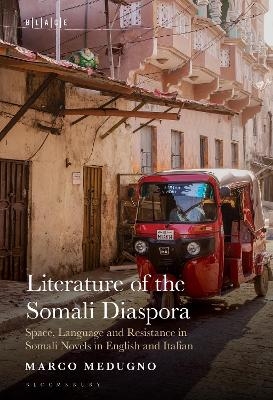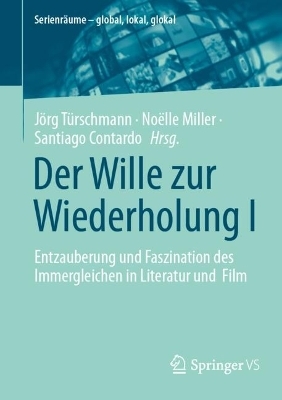
Literature of the Somali Diaspora
Bloomsbury Publishing USA (Verlag)
979-8-7651-0748-5 (ISBN)
Building on the latest scholarship about multilingual contexts, diaspora studies and the rapidly expanding field of Italian postcolonial studies, Marco Medugno examines Somali diasporic literature with a comparative perspective. Considering works written in English and Italian, he argues that Somali diasporic authors share similar themes and aesthetics, thus creating an interliterary community within the diaspora space.
By using multilingualism as a starting point, Medugno provides significant insights into how Somali national and individual identities are constructed in diasporic, global contexts through geography, style, form, language and the re-writing of national histories emerging out of colonization and independence. Analysing acclaimed Somali novels such as Nuruddin Farah’s Links and Crossbones, Igiaba Scego’s Adua and Cristina Ali Farah’s Little Mother, he questions any definition of ‘local’ as ‘provincial’, instead considering it a site for interrogating global concerns.
Literature of the Somali Diaspora is organized around three themes: spatiality, language and resistance help to contextualize authors, forced by the decades-long Somali Civil War, to write outside Somalia and in different languages – including Somali, Italian, English, German, Dutch and Arabic – within global literary circuits. Their work thus creates a literature not confined within national borders but an interliterary global community, a transnational and multilingual space in which they share world aesthetic ideologies, challenge and engage with literary traditions in different languages and show an interplay between diverse cultures
Marco Medugno is Associate Lecturer at Newcastle University, UK. He has published articles in journals of both Italian and Postcolonial studies, including From the European South and Italian Studies in Southern Africa.
List of Figures
Acknowledgements
Note on Text
Introduction
- Writing the Diaspora
- The Nation, the City, and Ourselves
- The Languages of Diasporic Subjectivities
- The Resistance Aesthetics of Somali Novels
- A Roadmap
Chapter 1. Key Places in the Somali Diasporic Imaginary
1.1 ‘Anthropological’ and ‘Supermodern’ Places
1.2 The Airport: From non-lieu to Metonymic Place
1.3 The Market: Local Spatiality and Cosmopolitanism
1.4 The Station: Termini between Physical and Linguistic Reterritorialisation
Chapter 2. Literary Cartographies of Mogadishu
2.1 The 1960s: The Legacy of Colonial Spatiality
2.2 The 1990s and the Aesthetics of War
Chapter 3. Multilingualism in Farah’s Links and Crossbones
3.1 The Role of ‘Inferno’ in Farah’s Links
3.2 Nuruddin Farah’s Linguistic Background
3.3 The Italian Language in Links and Crossbones
Chapter 4. The Spoken Word Meets the Script: Somali, Italian and the Role of Orature
4.1 Italian and Somali in Il latte è buono
4.2 Somali Orature and in Il latte è buono
Chapter 5. A Poetics of Resistance: Somali Literature and Letteratura della Resistenza
5.1 Postcolonial Authors: A Conundrum in Italian Literature?
5.2 Letteratura della Resistenza: A Historical and Literary Overview
5.3 Igiaba Scego’s Adua and the Representation of History
5.4 Ali Farah’s Little Mother Through the Lenses of Language and Autobiographical Testimony
Conclusion
Appendix
References
Index
| Erscheinungsdatum | 23.07.2024 |
|---|---|
| Reihe/Serie | Black Literary and Cultural Expressions |
| Zusatzinfo | 2 b&w illustrations |
| Verlagsort | New York |
| Sprache | englisch |
| Maße | 152 x 229 mm |
| Themenwelt | Geisteswissenschaften ► Sprach- / Literaturwissenschaft ► Anglistik / Amerikanistik |
| Geisteswissenschaften ► Sprach- / Literaturwissenschaft ► Literaturwissenschaft | |
| Sozialwissenschaften ► Soziologie | |
| ISBN-13 | 979-8-7651-0748-5 / 9798765107485 |
| Zustand | Neuware |
| Haben Sie eine Frage zum Produkt? |
aus dem Bereich


